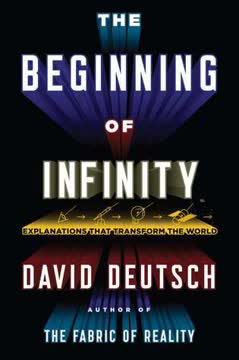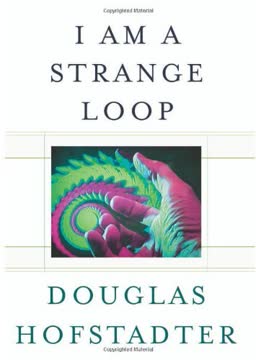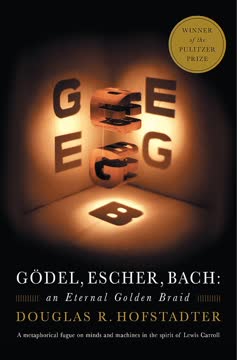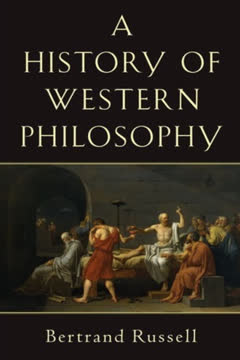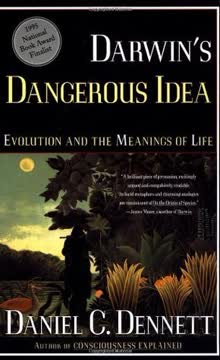つの重要なポイント
1. 意識は統一された流れではなく、複数の内容の草稿である
単一の決定的な「意識の流れ」は存在しない。なぜなら、すべてが「一つにまとまる」中央本部やデカルト劇場は存在しないからである。
複数草稿モデル。 単一の意識の流れの代わりに、脳は複数の専門化された回路を通じて並行して情報を処理する。これらの回路は様々な「草稿」を作成し、それらは常に編集され、修正される。いくつかの草稿は持続し、行動に影響を与えるが、他の草稿はすぐに消えてしまう。
- 複数草稿モデルの主要な側面:
- 情報の並行処理
- 内容の絶え間ない編集と修正
- 中央の「観客」や「意味付け者」の不在
- 行動や記憶に影響を与えるための草稿の競争
このモデルは、被験者が動く点が色を変えるのを第二の刺激が提示される前に見たと報告する色相Phi現象のような現象を説明する。これは「時間の逆行参照」ではなく、利用可能な情報に基づく脳の最良の解釈である。
2. 脳には意識のための中央の「デカルト劇場」は存在しない
これらの因果列がすべて「意識に」その内容を預けるために通過しなければならない一つの場所は脳には存在しない。
分散処理。 意識が発生する脳の中央の場所、つまり「デカルト劇場」の考え方は深刻な欠陥がある。代わりに、意識は様々な脳領域にわたる情報の分散処理から生じる。
- デカルト劇場の概念の問題点:
- 中央意識領域の神経解剖学的証拠の欠如
- タイミングの問題(例:「デカルトのボトルネック」)
- 盲視のような複雑な現象を説明できない
脳の構造は、中央のコーディネーターなしに各専門家が意識体験に貢献する「パンダモニウム」のようなものである。この分散モデルは、人間の意識の柔軟性と複雑さをよりよく説明する。
3. 言語は私たちの思考と内的体験を形作る
コンピュータの視点から自分自身を見ると、自然言語が私たちの最も重要な「プログラミング言語」であることを避けられない。
言語的足場。 言語は単なるコミュニケーションの道具ではなく、私たちの思考と内的体験を根本的に形作る。それは私たちの精神的内容を整理する構造を提供し、複雑なアイデアを操作することを可能にする。
- 言語が認知に影響を与える方法:
- 思考のためのカテゴリーと概念を提供する
- 抽象的な推論と計画を可能にする
- 内的独白と自己反省を形作る
- 文化的なアイデアの伝達(ミーム)を可能にする
言語の習得は私たちの認知風景を劇的に変え、思考と意識の新しい可能性を生み出す。この「言語的足場」は、他の動物とは異なる人間の意識の重要な側面である。
4. クオリアと現象的体験はそれほど神秘的ではない
自分自身と話すことができなければ、自分が何を考えているのか知る方法がないだろう。
クオリアの解明。 経験の言葉にできない内在的な質(クオリア)の概念は、しばしば意識の物質主義理論に対する大きな挑戦と見なされる。しかし、これらの神秘的とされる質は、脳の情報処理と私たちの経験に対する反省能力によって説明できる。
- クオリアに懐疑的である理由:
- 報告以外にその存在の明確な証拠がない
- 複雑な情報処理によって説明できる
- しばしば経験の内容と混同される
特別な「精神的な物質」を仮定する代わりに、現象的体験を脳の情報処理、分類、感覚情報に対する反省の結果として理解することができる。「何かを経験するとはどういうことか」という感覚は、この複雑な情報処理と自己反省の相互作用から生じる。
5. 脳は欠けている情報を「埋める」のではなく、ギャップを無視する
「埋める」という考え方の根本的な欠陥は、脳が何かを提供していると示唆することであり、実際には脳が何かを無視しているということである。
効率的な表現。 盲点やネオンカラー拡散のような現象において、脳は欠けている情報を「埋める」のではなく、効率的に世界を表現するためにギャップを無視し、利用可能な情報から一般化する。
- 効率的な表現の例:
- 盲点:埋められず、単に無視される
- ネオンカラー拡散:ピクセルごとの埋め込みではなく、領域のラベリング
- 壁紙錯視:限られたサンプルからの一般化
このアプローチは計算上効率的であり、なぜ私たちが知覚の多くのギャップに気づかないのかを説明する。また、意識が世界の詳細な内部レプリカを作成するという考え方に挑戦する。
6. 意識は遺伝的、表現型的、ミーム的な三つのプロセスを通じて進化する
人間の意識自体は、脳の並列アーキテクチャに実装された「フォン・ノイマン的」仮想マシンの操作として最もよく理解されるミーム(またはより正確には脳内のミーム効果)の巨大な複合体である。
進化の層。 人間の意識は、三つの進化プロセスが重なり合って生じたものである:
- 遺伝的進化:基本的な神経構造を提供する
- 表現型の可塑性:個々の学習と適応を可能にする
- ミーム的進化:文化的なアイデアと精神的習慣の伝達
この層状のアプローチは、人間の意識の複雑さと柔軟性を説明する。特にミームは、遺伝的制約を超えた迅速な文化的進化を可能にし、私たちの意識体験と認知能力を形作る重要な役割を果たす。
7. 私たちの自己感覚は脳によって作られた「ユーザー錯覚」である
私が提案しているのは、経験の背景にあるものはそれ以上のものではないということである。
仮想自己。 統一された意識的な自己感覚は、脳によって作られた「ユーザー錯覚」に似ている。コンピュータのユーザーインターフェースが複雑な基礎プロセスを簡略化するように、私たちの自己感覚は脳の分散プロセスの簡略化されたモデルを提供する。
- 自己の「ユーザー錯覚」の側面:
- 統一性と連続性の感覚
- 行為と自由意志の感覚
- 詳細な知覚意識の錯覚
このモデルは、脳の分散処理にもかかわらず、なぜ私たちの意識体験が統一されて感じられるのかを説明する。また、行動の後付けの説明を作り出すコンファビュレーションのような現象も説明する。
8. 盲視は視覚処理と意識の複雑さを明らかにする
盲視は(1)視覚情報の受信と(2)それにもかかわらず無意識であることを含む。
無意識の処理。 特定の脳損傷を持つ人々が意識的に見えない視覚刺激に反応できる盲視の現象は、視覚処理と意識の複雑さを明らかにする。
- 盲視からの主要な洞察:
- 視覚処理は意識的な認識なしに起こりうる
- 意識は特定の視覚誘導行動に必要ではない
- 視覚意識の単純なモデルに挑戦する
盲視は、意識が単純な感覚処理の結果ではなく、統合とアクセスの追加プロセスを含むことを示唆する。また、意識的体験と無意識の情報処理の関係についての疑問を提起する。
9. 意識体験のタイミングと順序は固定されていない
原因が効果に先行しなければならないという基本原則は、脳の編集作業を行う複数の分散プロセスに適用される。
柔軟なタイミング。 脳の分散処理は、意識体験のタイミングと順序が固定されていないことを意味する。代わりに、それらは利用可能な情報に基づく脳の最良の解釈に基づいて構築される。
- 柔軟なタイミングの影響:
- 色相Phi効果のような現象を説明する
- 固定された「意識の流れ」の考え方に挑戦する
- 意識が体験するよりも編集に近いことを示唆する
この見解は、意識体験のタイミングにおける明らかなパラドックスを解決し、なぜ私たちの主観的な時間感覚が客観的な測定と異なることがあるのかを説明する。
10. 内省は意識を理解するための信頼できる方法ではない
より中央の観察者を仮定する習慣を断ち切らなければならない。
内省の限界。 内省は私たちの意識体験について貴重なデータを提供することができるが、意識の基礎メカニズムを理解するための信頼できる方法ではない。
- 内省に懐疑的である理由:
- コンファビュレーションと後付けの合理化に陥りやすい
- 無意識のプロセスへのアクセスが限られている
- 意識についての理論や期待に影響される
内省にのみ頼るのではなく、意識の科学的理解には行動実験、神経科学的研究、哲学的分析の組み合わせが必要である。このアプローチは、直感的だが誤解を招く意識のモデルを超えて進むのに役立つ。
最終更新日:
FAQ
What's Consciousness Explained about?
- Exploration of Consciousness: Consciousness Explained by Daniel C. Dennett examines the nature of consciousness, aiming to demystify it through scientific and philosophical perspectives. It challenges traditional views like the Cartesian Theater, which suggests a central place in the brain for consciousness.
- Multiple Drafts Model: Dennett introduces the Multiple Drafts model, proposing that consciousness is not a singular experience but a series of parallel processes that interpret sensory inputs.
- Critique of Qualia: The book critiques the concept of qualia, arguing that they do not exist as separate, intrinsic properties of experiences. Instead, they are the results of complex interactions in the brain.
Why should I read Consciousness Explained?
- Challenging Perspectives: The book encourages readers to rethink their assumptions about consciousness and the mind, offering a fresh perspective that combines philosophy with empirical science.
- Interdisciplinary Approach: Dennett integrates insights from philosophy, neuroscience, and cognitive science, making it a rich resource for anyone interested in understanding the mind.
- Engaging Writing Style: Dennett's accessible prose and thought-provoking arguments make complex ideas understandable and engaging for a broad audience.
What are the key takeaways of Consciousness Explained?
- Consciousness is Complex: Consciousness is not a simple, unified experience but a complex interplay of various cognitive processes. Understanding this complexity is crucial for grasping how consciousness functions.
- Rejection of Dualism: Dennett rejects dualism, advocating for a materialistic view that consciousness arises from physical processes in the brain.
- Heterophenomenology as Method: Introduced as a way to study consciousness objectively, heterophenomenology involves interpreting individuals' reports of their experiences while remaining neutral about their reality.
What is the Multiple Drafts model in Consciousness Explained?
- Parallel Processing: The model posits that consciousness arises from multiple parallel processes in the brain that interpret sensory information, allowing different aspects of an experience to be processed simultaneously.
- No Central Theater: Unlike the Cartesian Theater model, the Multiple Drafts model argues that there is no single point in the brain where consciousness occurs.
- Dynamic Editing: The brain continuously edits and revises these drafts, leading to a fluid and dynamic experience of consciousness.
How does Dennett address the problem of qualia in Consciousness Explained?
- Qualia Disqualified: Dennett challenges the traditional notion of qualia by arguing that they do not exist as independent entities but are results of cognitive processes and interpretations.
- Focus on Function: He emphasizes the functional role of experiences in consciousness rather than their subjective qualities.
- Empirical Approach: Dennett advocates for scientific investigation to provide insights into the mechanisms behind what we perceive as qualia.
What is heterophenomenology, and how is it used in Consciousness Explained?
- Definition of Heterophenomenology: It is Dennett's method for studying consciousness that involves interpreting individuals' reports of their experiences while maintaining a neutral stance.
- Constructing a Fictional World: This approach allows for a systematic exploration of consciousness by treating subjects' reports as creating a fictional world.
- Avoiding Bias: Heterophenomenology helps avoid biases from personal beliefs or assumptions about consciousness, focusing on what subjects report.
How does Dennett explain hallucinations in Consciousness Explained?
- Internal Stimulation: Hallucinations occur due to internal stimulation of the brain's perceptual systems, generating vivid experiences without external reality.
- Passivity in Hallucinations: Individuals experiencing hallucinations often exhibit passivity, not actively engaging with the hallucinated content.
- Cognitive Processes: Hallucinations are understood as the brain's attempts to make sense of internal signals, leading to experiences that feel real.
What are the implications of Consciousness Explained for understanding free will?
- Materialistic View of Free Will: Free will is seen as a product of complex brain processes, challenging traditional notions of it as separate from physical reality.
- Conscious Decision-Making: Conscious decision-making arises from the brain's ability to process information and generate options, grounded in neural activity.
- Revising Responsibility: Understanding the mechanisms behind decision-making can inform views on accountability, encouraging a nuanced understanding of human behavior.
How does Consciousness Explained relate to contemporary debates in cognitive science?
- Integration of Disciplines: Dennett's work bridges philosophy, neuroscience, and psychology, contributing to ongoing discussions about the nature of consciousness.
- Challenging Traditional Views: The book challenges established theories, prompting researchers to reconsider their assumptions about consciousness.
- Influence on Future Research: Dennett's ideas have influenced subsequent research, particularly in areas related to perception, memory, and the nature of consciousness.
How does Dennett define the self in Consciousness Explained?
- Self as Narrative: The self is defined as a "Center of Narrative Gravity," shaped by the stories we tell about ourselves, emphasizing language and social interaction.
- Dynamic and Evolving: The self is a dynamic construct that evolves over time as we accumulate experiences and memories.
- Interconnectedness: The self is interconnected with various cognitive processes and social contexts, highlighting the importance of relationships in shaping identities.
What role does language play in Consciousness Explained?
- Language as a Tool: Language is crucial for constructing and expressing thoughts and experiences, shaping our understanding of self.
- Influence on Consciousness: Language influences how we perceive and interpret experiences, affecting consciousness.
- Cultural Context: Language is embedded in cultural contexts, shaping narratives and identities, emphasizing that consciousness is socially constructed.
What is the significance of the "Center of Narrative Gravity" concept in Consciousness Explained?
- Identity Formation: It highlights how identities are formed through narratives, emphasizing storytelling in understanding who we are.
- Dynamic Self: The self is a dynamic construct that evolves over time, reflecting the fluid nature of identity.
- Social Interaction: The concept underscores the role of social interactions in shaping narratives and identities, influenced by shared stories.
レビュー
本書『Consciousness Explained』は賛否両論を受けている。デネットの革新的なアイデアと科学的アプローチを称賛する声もあれば、彼の還元主義的な見解や文体を批判する意見もある。多くの読者は本書を難解だが刺激的だと感じ、デネットの意識を解明しようとする試みを評価している。批評家たちは、彼が意識を完全に説明できていないことや、難問に対処していないことを指摘する。複数の草稿モデルやデカルト劇場の否定は重要な貢献と見なされている。全体として、読者は本書を野心的で影響力があると感じており、その結論に同意しない場合でも同様である。
Similar Books
